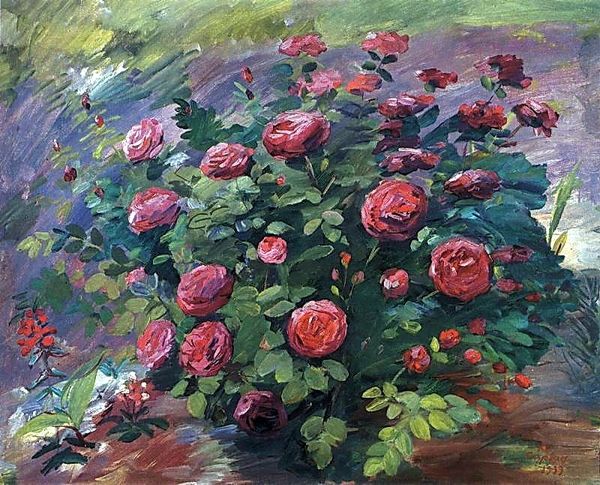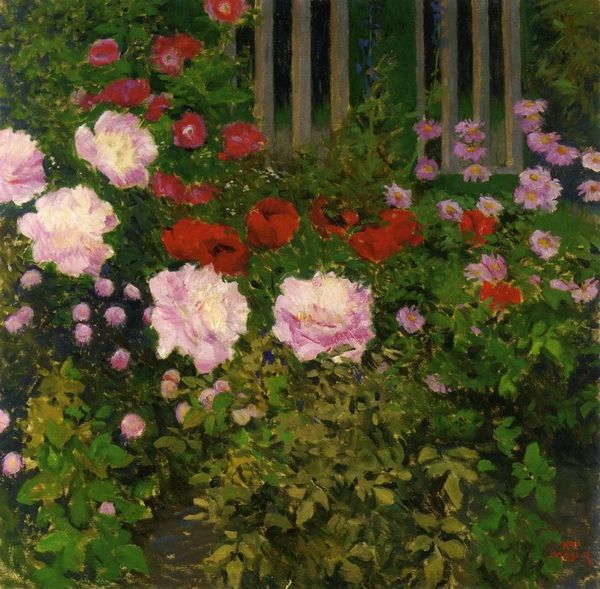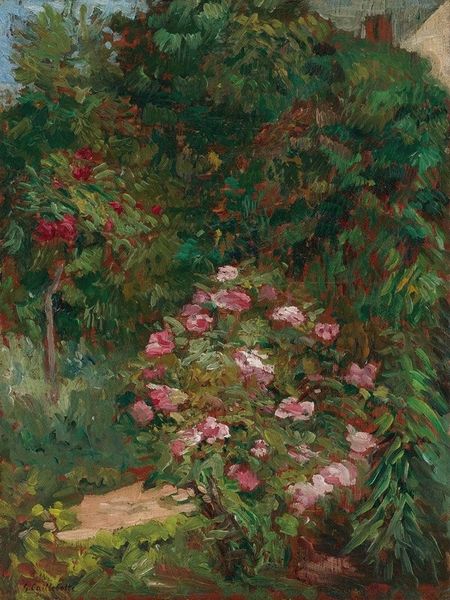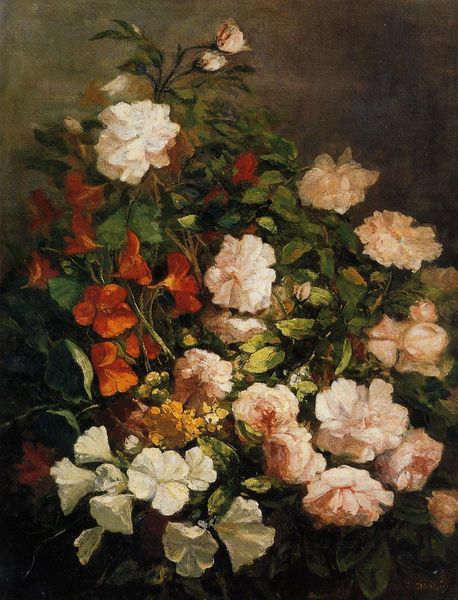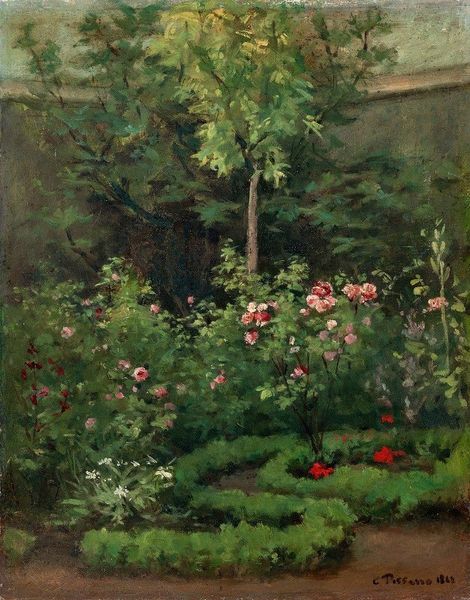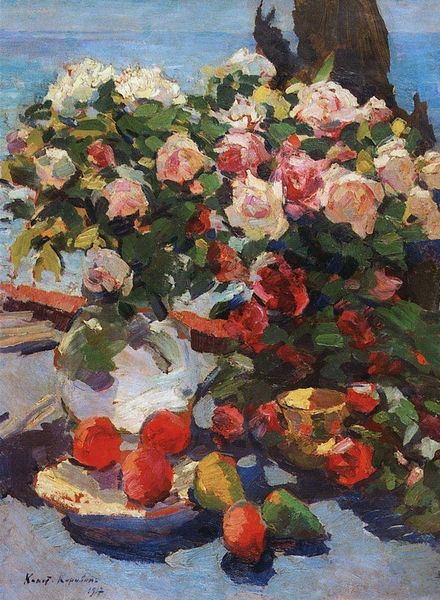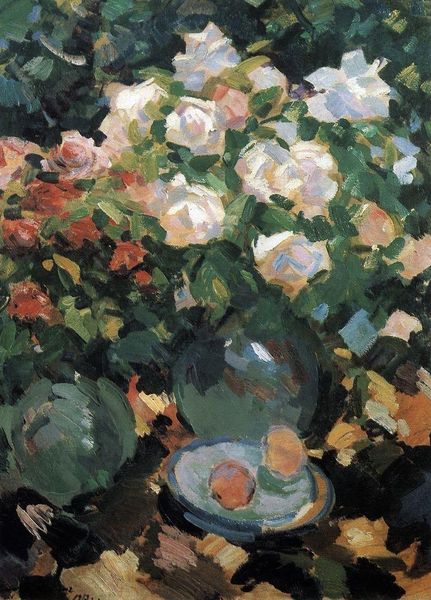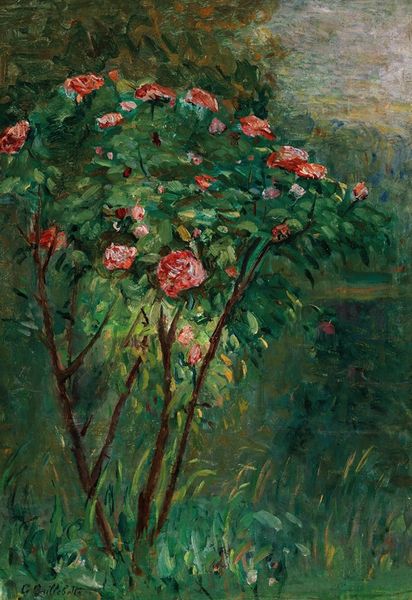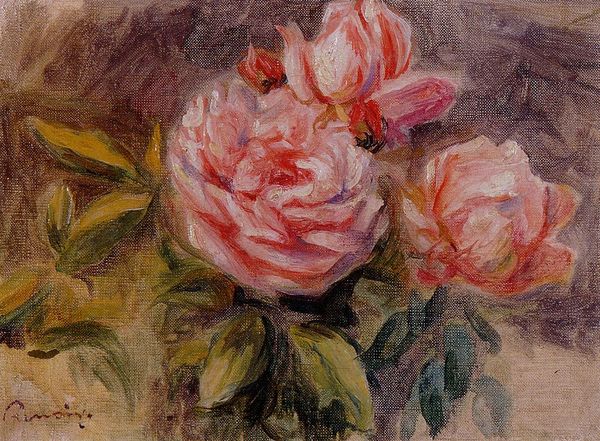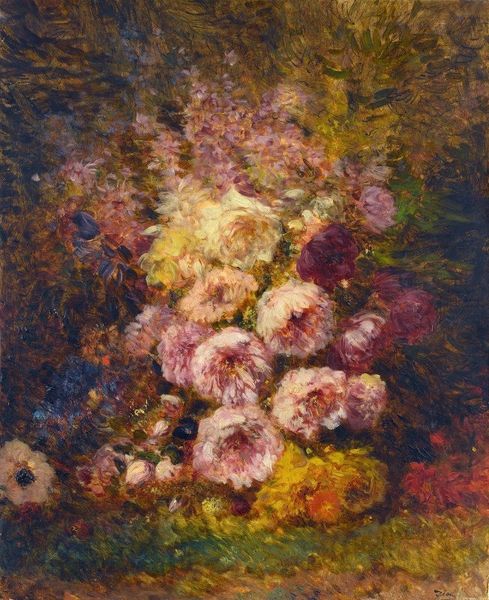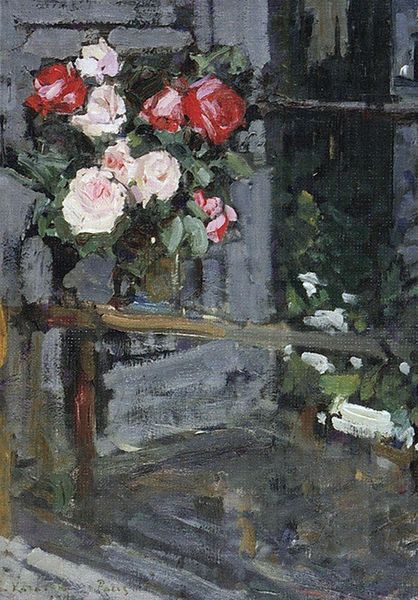
Copyright: Public domain
Curator: Looking at Konstantin Makovsky's "Roses," completed in 1890 using oil paint, I'm struck by the way it navigates between Romanticism and Realism. It's interesting to see how the seemingly simple subject matter intertwines with complex aesthetic movements. What's your first impression? Editor: It feels like a secret garden! The textures are almost touchable. I get lost in that bush of pink blooms. There’s something a little melancholy about the faded colors, like remembering a beautiful dream. Curator: Indeed, the faded quality brings forward issues surrounding the romantic idealization of nature versus its inevitable decay. Makovsky’s roses, caught in a fleeting moment of beauty, underscore the precarity of such visions within late 19th-century anxieties regarding time, memory, and loss. Editor: And yet, even though there is a melancholic aura hanging around, these roses don't feel overtly dramatic. They feel real, everyday. Not just some theatrical bouquet designed for admiration. The imperfection gives them character. I bet the fence in the back had its stories as well. Curator: You point out the subtle commentary regarding domesticity inherent in portraying a common, unassuming flower, situated behind a wooden fence rather than in a vase on display. The art market commodifies and appropriates depictions of femininity for capitalist means, but this approach seemingly subverts it through its subdued naturalism. Editor: Definitely, the artist created more of a visual poem here than a stiff portrait. I can almost smell the petals after a rain shower. I wonder what inspired him, what thoughts filled his mind as he captured this slice of life. Curator: Makovsky’s intentions, viewed through today’s lens, open many questions concerning the relationship between private emotion, the objectification of beauty standards, and the prevailing art market demands in late 19th-century Russia. Was he consciously aware of his placement within these complex power structures, or was he simply answering to a commercial imperative? Editor: Hmm, sometimes, the most powerful statements are whispered, not shouted, don't you think? Maybe he just wanted to show us something beautiful that existed for a few days, just a regular glimpse that has some meaningful secret within it. I guess that's the power of art. Curator: An astute observation, encapsulating how artworks like "Roses" invite endless interpretation. Editor: It was like a mindful minute in a busy life. Thanks for walking me through!
Comments
No comments
Be the first to comment and join the conversation on the ultimate creative platform.

